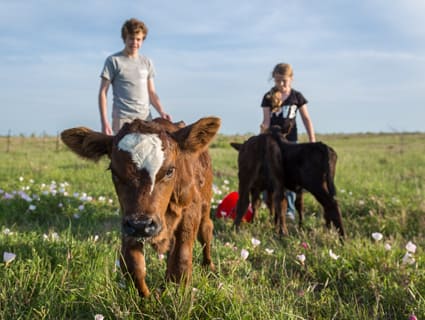Circular economy in animal feed: 4 ways we help customers do more with less
Read Time: 4 minutes
January 16, 2024
There’s a lot resting on farmers’ shoulders.
They are the foundation of our global food system. They’re also on the front lines as the world faces unprecedented challenges, like a changing climate and feeding a growing population.
Helping farmers succeed is the key to not only solving those challenges but also creating a balance between sustainability, food affordability and farmers’ livelihoods.
A circular economy can help.
“We’re talking about a system that reduces waste by carefully considering every ingredient. We want to leave our world a better place than the way we found it,” says Linda Midgley, senior director of sustainability for Cargill’s animal nutrition and health business.
Teams across Cargill are playing a transformative role to help build a food system that does more with less — from developing and using innovative raw materials to making it easier on farmers to sustainably feed their animals.
“Our team is working to maximize nutrition’s power to more effectively feed the world and protect the planet,” Linda says.
Below are four examples of how we’re helping farmers do more with less.
1. Animal farmers, the original upcyclers, have a new Cargill tool.
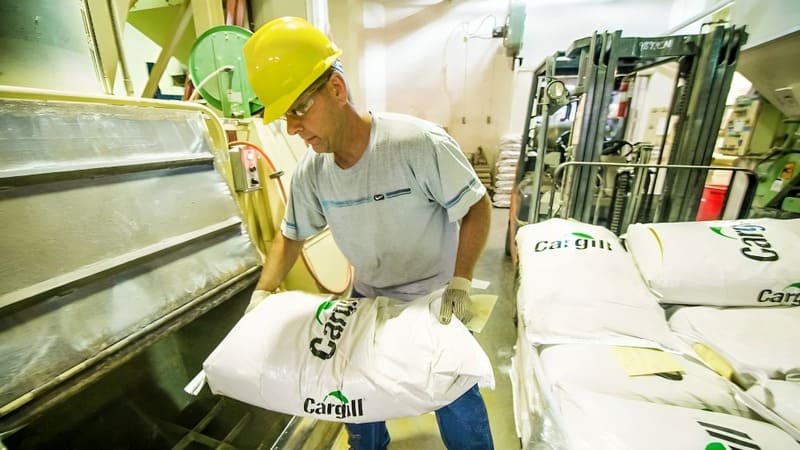 Upcyling for feed purposes is a common practice for animal farmers. Cargill is now helping them be more precise than ever with the Cargill Nutrition System.
Upcyling for feed purposes is a common practice for animal farmers. Cargill is now helping them be more precise than ever with the Cargill Nutrition System.
Livestock are great recyclers. Did you know that in the U.S., over 40% of feed ingredients are byproducts of other industries? This equals roughly 113.6 million tons of materials diverted from landfills annually. Coproducts and byproducts from human foods that would otherwise go to landfills become nutritious feed for cattle and other species.
Livestock, poultry and fish have the unique ability to consume products that would be discarded by humans. Examples abound: from food waste to meat-and-bone meal to by-products from many industries, like bakery residues and oilseed meal.
The practice of upcycling in animal feed is not novel. However, precision nutrition driving towards 100% nutrient utilization is.
Consider this: An apple from your corner grocery store may have more fiber and calories than the grocery store across town. Even though they are both apples and may look identical, their nutritional profiles aren’t.
The same is true for feeding animals on-farm. Without accurate measurement and calculations, a farmer may acquire too much of one ingredient — or too little.
Enter the Cargill Nutrition System (CNS). Part of the digital Cargill Nutrition Cloud platform, it combines our knowledge of what diets animals need to be healthy, productive and sustainable with the knowledge we have about raw materials used to feed those animals.
After inputting their animals’ nutritional needs into this platform, farmers get real-time insights on designing precise diets and products for their flock or herd. The system also considers species, climate, geography, business goals and local ingredient costs from the best suppliers to help farmers make the best decision for their operation.
“With CNS, we are helping farmers to utilize by-products that otherwise would be treated as waste. We upcycle these ingredients into high-quality protein, reducing the land and water usage to produce grains for feed. That’s the essence of the circular economy — finding better uses for unconventional raw materials,” says Adriano Marcon, animal nutrition leader for the Americas and global Micronutrition & Health Solutions. “Our ultimate goal with CNS is to reach zero-nutrient waste, which is better for our customers, their animals and our planet.”
2. Feed additives: A silent ally of zero-waste
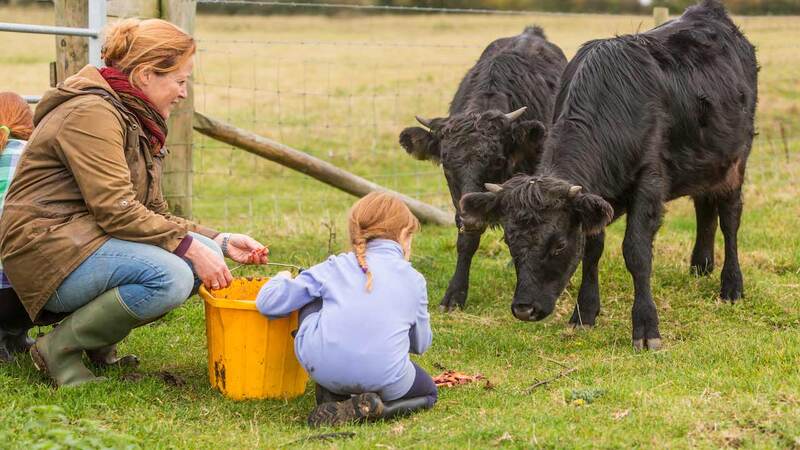 Feed additives help improve the efficiency of an animal’s diet. They also help reduce waste.
Feed additives help improve the efficiency of an animal’s diet. They also help reduce waste.
Feed additives are part of farm animals’ everyday diet. Strategically added when developing the animals’ feed, additives play a vital role in reducing waste, maximizing nutrition, and enhancing efficiency.
“Without nutritional and technological additives, animals would have to eat much more to meet their nutritional requirements for performance,” said Christos Antipatis, global additives strategic marketing and technology director for Cargill’s animal nutrition and health business.
Christos was recently featured in an interview with Feed Strategy, where he discusses how Cargill is using feed additives to strengthen the circular economy that benefits our customers and the planet.
“Our aim is to lower protein levels in the feed by formulating with synthetic amino acids and also other additive solutions,” Christos added. “In this way, we are able to reduce waste and enhance sustainability.”
Watch the full interview here.
3. More bugs = more sustainable seafood
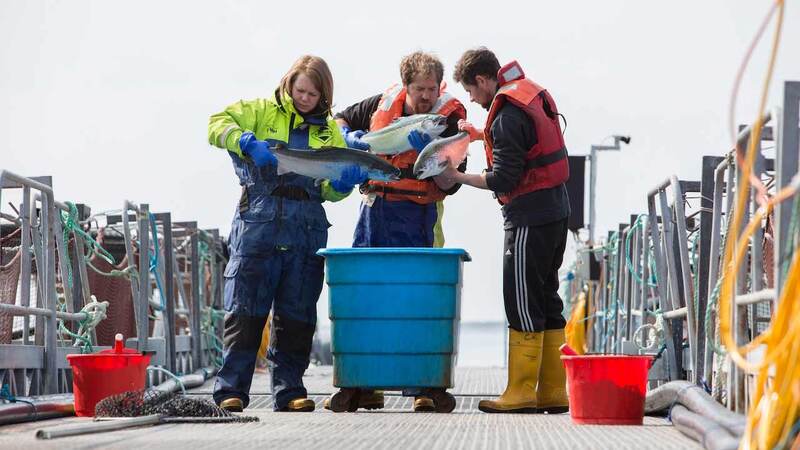 Insect meal is a sustainable way to grow the production of feed for fish.
Insect meal is a sustainable way to grow the production of feed for fish.
What if one of the keys to a more sustainable planet were … insects?
That’s what we’re exploring in aqua nutrition. We have a partnership with biotechnology company Innovafeed to develop and market insect meal that will help fish farmers raise more sustainable seafood with a reduced environmental impact.
The partnership brings together Innovafeed’s expertise in formulating precision insect ingredients with Cargill’s global aqua and animal nutrition know-how to expand the use of insects as a sustainable alternative fish feed ingredient. More traditional ingredients, like fishmeal derived from wild-caught fish, are naturally limited in availability.
Fish farmers are becoming increasingly aware of the benefits of insect-based feed. It’s not just the nutritional value. Innovafeed’s high-quality insect meal in aqua feed also has the potential to save up to 16,000 tons of carbon dioxide for every 10,000 tons of insect protein.
“Innovafeed is producing highly nutritious ingredients in a sustainable way and their ethical and people-first values really match with ours at Cargill,” said Helene Ziv-Douki, leader of Cargill Aqua Nutrition. “When we combine it with our expert aqua knowledge, we provide our customers options to operate more sustainably. It’s good for ocean health and for business.”
4. Hershey’s leftover chocolate? A treat for cows.
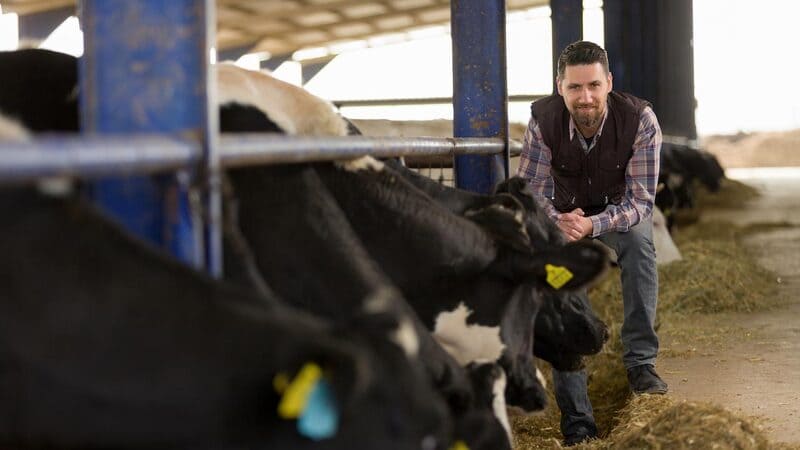 Since 2011, Cargill and Hershey’s have partnered to turn the chocolatier’s waste into animal feed.
Since 2011, Cargill and Hershey’s have partnered to turn the chocolatier’s waste into animal feed.
In 2011, Cargill and Hershey’s joined forces for a sweet endeavor: Take the chocolatier’s waste stream. Turn it into animal feed. Nourish livestock. Divert food from the landfill.
“We knew it was a safe bet,” says Darryl Reiner, senior merchant for Cargill’s animal nutrition and health business. “We took over their chocolate waste, tweaked it and made it even better.”
Darryl works at our plant in Chambersburg, Pennsylvania (U.S.), a facility devoted to turning tens of thousands of pounds of Hershey’s chocolate waste into nutritious, sustainable ingredients that feed cows, pigs and other livestock.
The finished product — which combines Hershey’s waste with various dry feed nutrients — is called “candy meal.” It’s not only healthy for farmers to feed their cows but also a cheaper alternative to sugar.
“It’s a win-win for everyone,” Darryl concludes. “Hershey’s, the environment, our customers and Cargill.”
More stories
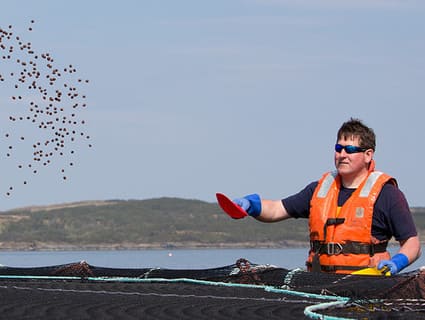
Netting zero: Helping fish farmers fight climate change
Cargill’s SeaFurther Sustainability initiative is connecting customers and suppliers to create a more sustainable seafood industry.
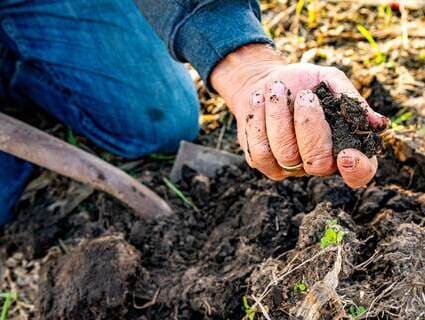
Digging in: Cargill’s regenerative agriculture program brings healthier soil and profits to more European, U.S. farmers
Cargill’s RegenConnect® program is building on its success in North America to expand to more U.S. states and Europe
Sustainable beef: Bringing farmers, ranchers and customers together to fight climate change
Cargill’s BeefUp Sustainability initiative aims to cut beef emissions from our North American beef supply chain by 30% by 2030.

